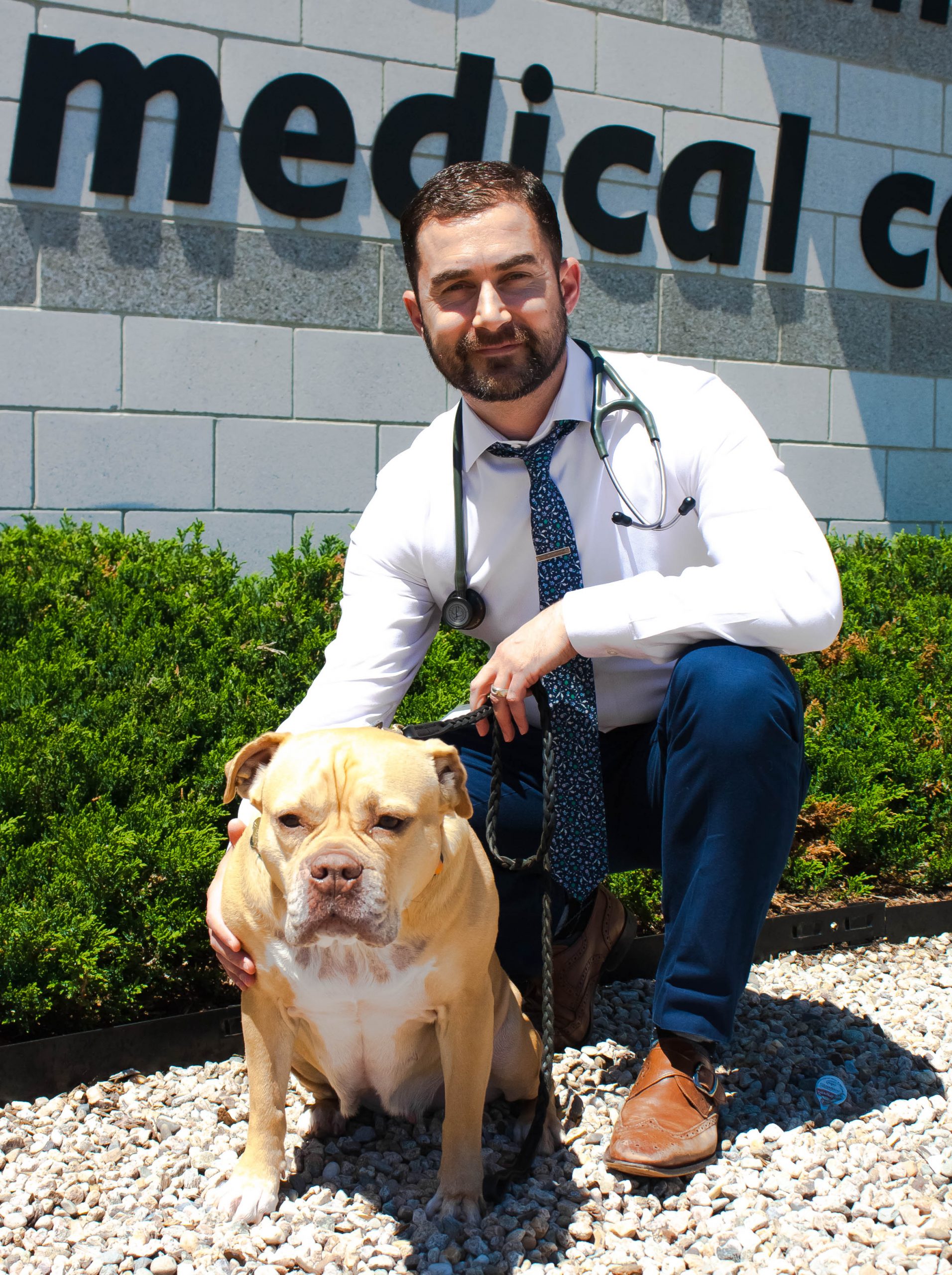-
Adopt
-
Veterinary Care
Services
Client Information
- What to Expect – Angell Boston
- Client Rights and Responsibilities
- Payments / Financial Assistance
- Pharmacy
- Client Policies
- Our Doctors
- Grief Support / Counseling
- Directions and Parking
- Helpful “How-to” Pet Care
Online Payments
Emergency: Boston
Emergency: Waltham
Poison Control Hotline
-
Programs & Resources
- Careers
-
Donate Now
![]()
 By Rob Daniel, DVM, DACVIM (Neurology)
By Rob Daniel, DVM, DACVIM (Neurology)
angell.org/neurology
neurology@angell.org
617-541-5140
October 2024
x
Muscle is imperative to health. Making up a substantial proportion of body mass, muscle is a major determinant of basal metabolic rate and can be recruited to increase energy expenditure. Providing forces for movement, posture, alimentation, and circulation, muscle is also responsible for thermoregulation and physical growth. Muscle is a vital regulator of glucose, amino acids, and lipid homeostasis.
Disorders of muscle, myopathies, in veterinary medicine are numerous. Key historical and physical examination features often direct the clinician to include muscle as a primary focus for determining differential diagnoses and decision-making on tiered testing and treatment options. Serum creatine kinase (CK) activity can be a useful parameter to help consider primary muscle diseases and various parameters on routine laboratory biochemical testing, such as AST and ALT activity levels. Some general parameters for elevations of serum CK would include focal myositis <2000 IU/L, generalized polymyositis 2000 IU/L – 20,000 IU/L, and necrotizing myopathies >20 000 IU/L. Canine half-lives of CK, AST, and ALT have been established, with CK showing a half-life of 2.5 hours, AST a half-life of 22 hours, and ALT a half-life of 59 hours
established, with CK showing a half-life of 2.5 hours, AST a half-life of 22 hours, and ALT a half-life of 59 hours
Focal forms of myopathy are relatively common, including Masticatory Muscle Myositis (MMM) and, less commonly, Extraocular Myositis (EOM). More generalized forms of immune-mediated polymyopathy have also been identified. A thorough history, physical examination, routine laboratory screening, and some specialized testing involving Type IIM Autoantibody Assay +/- a muscle biopsy can often help reach a definitive diagnosis and pave the way for immunomodulatory treatments. Infectious myopathies can rarely be identified when present, often from having a higher index of suspicion and/or from organism-specific testing/identification. In general, inflammatory myopathies carry a fair prognosis, with potential for good, provided an early diagnosis is reached with treatment starting early in the disease course.
Congenital myopathies are relatively uncommon, with Muscular Dystrophy (MD) a noteworthy example. These diseases are often identified through muscle biopsy and subsequent histopathology using specialized stains in a designated laboratory.
Endocrine myopathies are relatively common, with hyperadrenocorticism and hypothyroidism being common examples seen in small animal clinical practice. Paraneoplastic polymyopathies are uncommon but should be considered in any focal or generalized myopathy during temporal association with identified neoplasia.
Physical therapy is often helpful in preserving and rebuilding muscle during and after treatment strategies. In addition to physical rehabilitation, nutritional supplements can be adjunctive therapy to help optimize muscle strength and endurance. Common supplements in dogs include L-carnitine (100 mg/kg PO q 24 hrs), co-enzyme Q10 (4 mg/kg PO q 24 hrs), and B-complex vitamins (PO once daily).